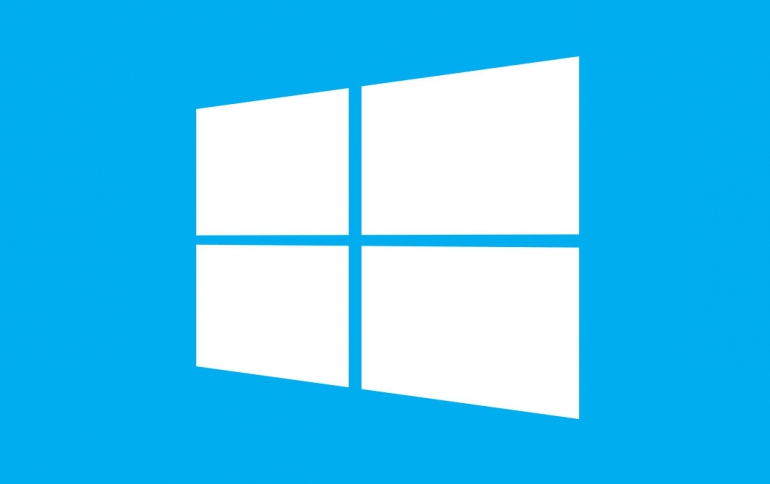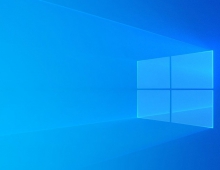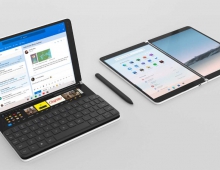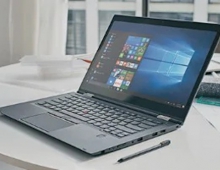
Windows 10 Compression Makes The OS More Compact
Windows 10 will be made available to devices ranging fron desktoops to mobiles, and the Windows Storage and Deployment Teams have been trying to give the new operating system a compact footprint by applying smart system compression techniques.
Windows 10 employs two separate and independent approaches for achieving a compact footprint. First, Windows 10 leverages an efficient compression algorithm to compress system files. Second, recovery enhancements have removed the requirement for a separate recovery image.
With current builds, Windows can efficiently compress system files. According to Microsoft, that gives back approximately 1.5GB of storage for 32-bit and 2.6GB of storage for 64-bit Windows. Phones will also be able to use this same efficient compression algorithm and likewise have capacity savings with Windows 10.
Microsoft's teams are also redesigning Windows? Refresh and Reset functionalities to no longer use a separate recovery image (often preinstalled by manufacturers today) in order to bring Windows devices back to a pristine state. This reduces Windows? storage footprint further as the recovery image on typical devices can range in size from 4GB to 12GB, depending on the make and model. Phones already have a storage-optimized recovery solution, so, unlike compression, this enhancement is only for tablets, laptops, and desktops.
To ensure compressed system files do not adversely affect system responsiveness, Windows considers a number of factors when assessing whether a device should use compression or not.
One important factor is the amount of memory (RAM) a device has. The amount of RAM a device has determines how often it retrieves system files from storage. Another important factor is how quickly a device?s CPUs can run the decompression algorithm when retrieving system files. By considering these and other important factors, Windows is able to assess if a device can use compression without reducing human-perceivable responsiveness.
Not only does Windows 10 intelligently use compression to keep the system footprint efficient, Windows 10 also uses compression to keep store apps? footprint small.
Microsoft is also working on making system recovery lightweight and efficient. Without a separate recovery image, the Refresh and Reset functionalities will instead rebuild the operating system in place using runtime system files. Not only does this take up less disk space, it also means you will not have a lengthy list of operating system updates to reinstall after recovering your device.
Even though Windows no longer requires a separate recovery image, Windows can still recover a device from severe corruption. With Windows 10, you can create your own recovery media and back up the pristine state of the operating system and preinstalled software. If things go wrong and you are unable to refresh or reset your device successfully, you can boot the device using recovery media and reset to the prior pristine state.
With current builds, Windows can efficiently compress system files. According to Microsoft, that gives back approximately 1.5GB of storage for 32-bit and 2.6GB of storage for 64-bit Windows. Phones will also be able to use this same efficient compression algorithm and likewise have capacity savings with Windows 10.
Microsoft's teams are also redesigning Windows? Refresh and Reset functionalities to no longer use a separate recovery image (often preinstalled by manufacturers today) in order to bring Windows devices back to a pristine state. This reduces Windows? storage footprint further as the recovery image on typical devices can range in size from 4GB to 12GB, depending on the make and model. Phones already have a storage-optimized recovery solution, so, unlike compression, this enhancement is only for tablets, laptops, and desktops.
To ensure compressed system files do not adversely affect system responsiveness, Windows considers a number of factors when assessing whether a device should use compression or not.
One important factor is the amount of memory (RAM) a device has. The amount of RAM a device has determines how often it retrieves system files from storage. Another important factor is how quickly a device?s CPUs can run the decompression algorithm when retrieving system files. By considering these and other important factors, Windows is able to assess if a device can use compression without reducing human-perceivable responsiveness.
Not only does Windows 10 intelligently use compression to keep the system footprint efficient, Windows 10 also uses compression to keep store apps? footprint small.
Microsoft is also working on making system recovery lightweight and efficient. Without a separate recovery image, the Refresh and Reset functionalities will instead rebuild the operating system in place using runtime system files. Not only does this take up less disk space, it also means you will not have a lengthy list of operating system updates to reinstall after recovering your device.
Even though Windows no longer requires a separate recovery image, Windows can still recover a device from severe corruption. With Windows 10, you can create your own recovery media and back up the pristine state of the operating system and preinstalled software. If things go wrong and you are unable to refresh or reset your device successfully, you can boot the device using recovery media and reset to the prior pristine state.





















